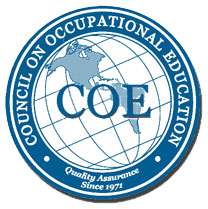Physical Therapy Aide Certification
Complete Guide to Physical Therapy Aide Certification
Physical therapy aide certification is a crucial step for those looking to enter the healthcare field and assist physical therapists in patient care. This certification provides you with the necessary skills and knowledge to support physical therapists and their patients effectively. As the demand for healthcare professionals continues to grow, obtaining a physical therapy aide certificate can open up new career opportunities and provide a solid foundation for further advancement in the field.
In this comprehensive guide, you’ll learn about the steps to become a certified physical therapy aide, the key skills and qualities needed for success, and the day-to-day responsibilities of the role. We’ll also explore various specializations within physical therapy and how they can shape your career path. Whether you’re considering a physical therapy aide course or are already working towards your certification, this guide will provide valuable insights to help you navigate your professional journey in this rewarding field.
Steps to Become a Certified Physical Therapy Aide
To embark on a career as a certified physical therapy aide, you need to follow these essential steps:
Complete high school education
The minimum requirement to work as a physical therapy aide is a high school diploma or a General Educational Development (GED) equivalent. This foundational education demonstrates your preparedness for academic success and lays the groundwork for further training.
Enroll in a Physical Therapy Aide program
While some physical therapy aides receive on-the-job training, many employers prefer candidates who have completed a formal physical therapy aide program. These programs are available at technical colleges, vocational schools, and through certificate courses. They typically last a few weeks to two months and provide comprehensive training in the role’s responsibilities, treatment techniques, and professional development.
Gain hands-on experience
Many physical therapy aide programs offer hands-on experience through supervised labs and clinical rotations. This practical training allows you to apply your knowledge in real-world scenarios, better preparing you for the demands of the job.
Obtain certification
To further validate your skills and increase your employability, consider obtaining the Physical Therapy Technician/Aide Certification (PTTC) from the American Medical Certification Association (AMCA). This certification demonstrates your proficiency in the field and can make you a more competitive candidate for physical therapy aide positions.
Key Skills and Qualities for Success
As a physical therapy aide, you need to possess a unique set of skills and qualities to excel in your role. These attributes are crucial for providing effective support to physical therapists and ensuring the best possible care for patients.
Physical Stamina
Physical therapy aide work demands significant physical activity. You must be able to perform tasks like lifting, bending, and standing for extended periods. Maintaining physical stamina is essential as you assist patients with exercises, transfer them between equipment, and ensure their safety throughout the treatment process.
Communication Skills
Effective communication is vital in the field of physical therapy. You need to clearly convey instructions to patients, actively listen to their concerns, and collaborate seamlessly with the supervising physical therapist and other healthcare professionals. Polished interpersonal skills help build trust with patients and their families, ensuring they feel comfortable and informed throughout the treatment journey.
Attention to Detail
As a physical therapy aide, attention to detail is paramount. You must meticulously follow treatment protocols, maintain accurate patient records, and closely observe patients’ progress and responses. This level of diligence ensures that any changes or concerns are promptly addressed, contributing to the overall success of the treatment plan.
Empathy and Patience
Many patients undergoing physical therapy may experience pain, frustration, or anxiety during their recovery process. As a physical therapy aide, you need to approach each individual with empathy and patience. Understanding their unique circumstances and providing emotional support can significantly impact their healing journey and overall well-being.
By cultivating these essential skills and qualities, you can become an invaluable asset to the physical therapy team, contributing to the successful rehabilitation and improved quality of life for patients.
Day-to-Day Responsibilities of a Physical Therapy Aide
As a physical therapy aide, you play a crucial role in supporting the delivery of effective physical therapy care. Your responsibilities encompass a wide range of tasks that contribute to the smooth operation of the facility and the well-being of patients.
Patient Preparation and Assistance
One of your primary duties involves preparing the treatment area, equipment, and materials for the patient’s therapy session. You assist patients by welcoming them, providing appropriate attire, and ensuring their comfort throughout the process. Additionally, you help patients onto exercise equipment, monitor their movements, track their progress, and perform prescribed exercises and strengthening techniques under the supervision of a licensed physical therapist or physical therapist assistant.
Equipment Management
Ensuring the proper functioning of physical therapy equipment is vital for delivering safe and effective treatment. You contribute to this by completing preventive maintenance tasks, following manufacturer instructions, troubleshooting any malfunctions, and arranging for necessary repairs. Furthermore, you manage the physical therapy supply inventory by monitoring stock levels, anticipating needs, placing orders, and verifying the receipt of supplies.
Maintaining a Clean Environment
Creating and maintaining a clean and safe environment is essential for the well-being of patients and staff alike. You play a crucial role in this by adhering to established procedures, rules, and regulations for cleaning and sanitizing treatment areas and equipment after each use. This includes disinfecting high-touch surfaces, therapy mats, resistance bands, and weights to prev
Administrative Tasks
In addition to your hands-on responsibilities, you contribute to the smooth operation of the facility by performing various administrative tasks. These may include documenting patients’ responses to treatment, updating patient files, answering phone calls, scheduling appointments, and providing information to patients and their families. Your attention to detail and effective communication skills are invaluable in ensuring accurate record-keeping and fostering a positive patient experience.
By fulfilling these day-to-day responsibilities with professionalism and dedication, you contribute significantly to the success of the physical therapy team and the overall well-being of the patients you serve.
Specializations Within Physical Therapy
Physical therapy encompasses various specialties, each focusing on specific populations or conditions. As a physical therapy aide, you have the opportunity to work alongside therapists in different areas, broadening your knowledge and experience. Here are some common specializations within the field:
Geriatric Care
Geriatric physical therapy focuses on addressing the physical effects of aging. You may assist therapists in treating conditions like Alzheimer’s disease, arthritis, balance disorders, osteoporosis, and stroke recovery. The goal is to help older adults maintain mobility, reduce pain, and improve fitness, enabling them to perform daily activities independently.
Pediatric Therapy
Pediatric specialists work with infants, children, and adolescents, treating conditions such as cerebral palsy, cystic fibrosis, and developmental disorders. As a physical therapy aide, you may support therapists in providing specialized care to help young patients improve movement patterns, strength, flexibility, and functional abilities.
Sports Rehabilitation
In sports rehabilitation, you’ll assist therapists in evaluating and treating athletes with sports-related injuries, such as sprains, fractures, and concussions. Your role may involve helping athletes rebuild strength, regain movement, and prevent further injuries through exercises, stretches, and specialized equipment.
Neurological Rehabilitation
Neurological physical therapy focuses on treating patients with movement problems caused by diseases or injuries affecting the nervous system. You may aid therapists in addressing conditions like stroke, Parkinson’s disease, multiple sclerosis, and spinal cord injuries. The goal is to improve balance, coordination, and functional independence through therapeutic interventions.
By understanding these specializations, you can better appreciate the diverse roles physical therapy aides play in supporting therapists and contributing to the well-being of patients across various populations and conditions.
Conclusion
The journey to becoming a certified physical therapy aide offers a clear path to a rewarding healthcare career. By completing the necessary education, gaining hands-on experience, and obtaining certification, you equip yourself with the skills to support physical therapists and make a real difference in patients’ lives. The role demands physical stamina, strong communication, attention to detail, and empathy – qualities that form the backbone of effective patient care.
Physical therapy aides play a crucial part in the day-to-day operations of therapy facilities, from patient assistance to equipment management and administrative tasks. With various specializations available, from geriatric care to sports rehabilitation, the field provides opportunities for growth and specialization. As you consider this career path, remember that your dedication and skills can have a significant impact on improving patients’ mobility and quality of life.
FAQs
What are the roles of a physical therapist aide compared to a physical therapist assistant?
Physical therapist assistants actively participate in patient care, whereas physical therapist aides primarily support these care activities indirectly. Aides are responsible for tasks such as cleaning and preparing the treatment areas, assisting with patient mobility, and handling clerical duties.
What is the typical salary for a physical therapy aide in California?
According to the Bureau of Labor Statistics, physical therapy aides in California typically earn an average of $18.47 per hour or $38,430 per year*.
What steps are required to become a physical therapist aide in California?
To work as a physical therapy aide in California, you must have a high school diploma or a GED. Unlike some other states, California does not require physical therapy aides to be licensed.



